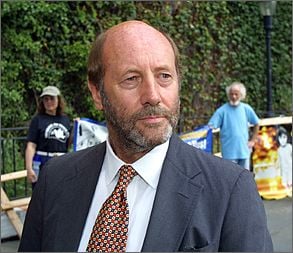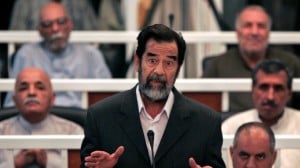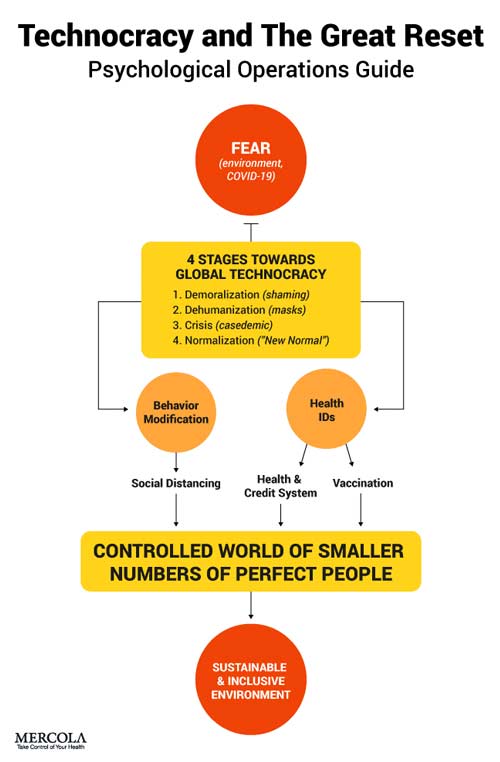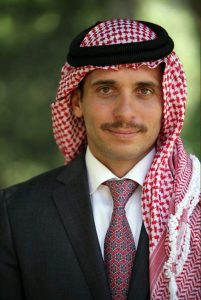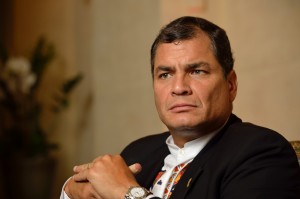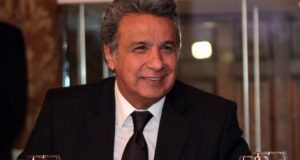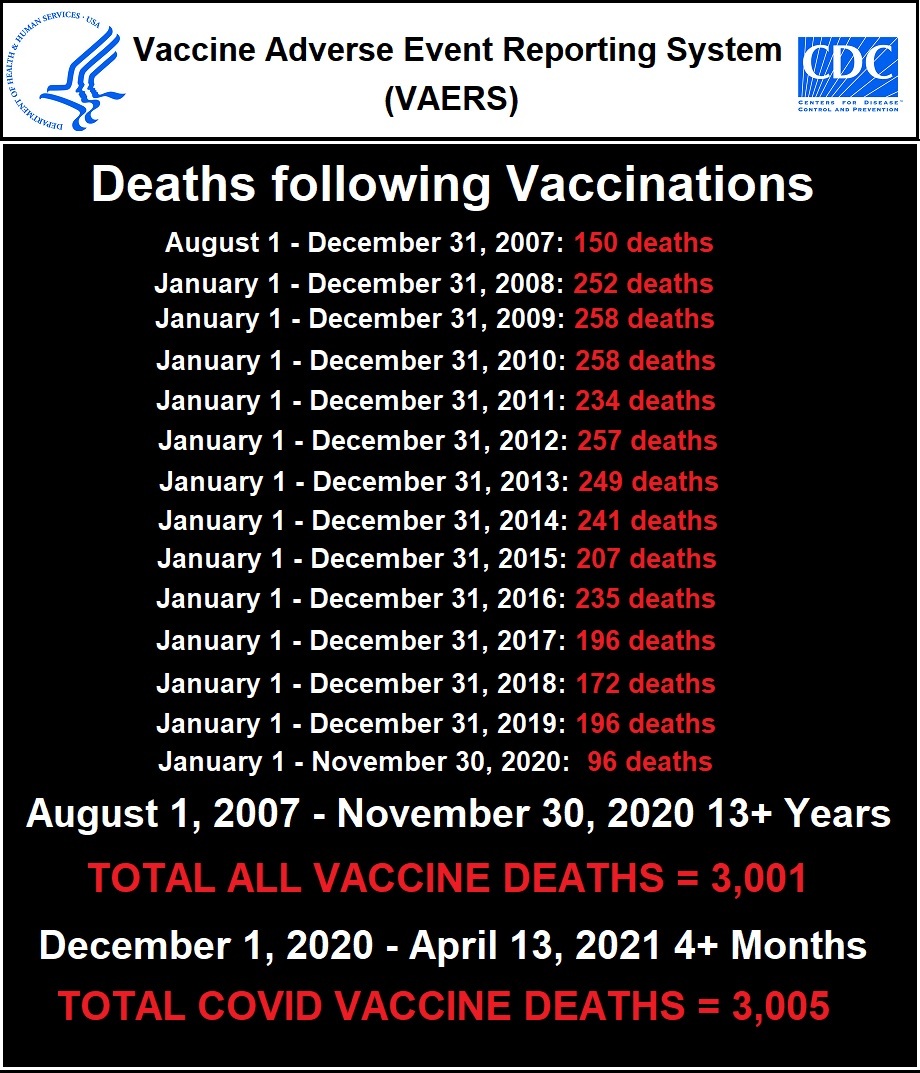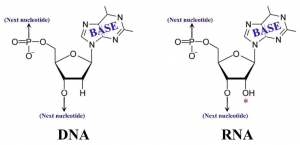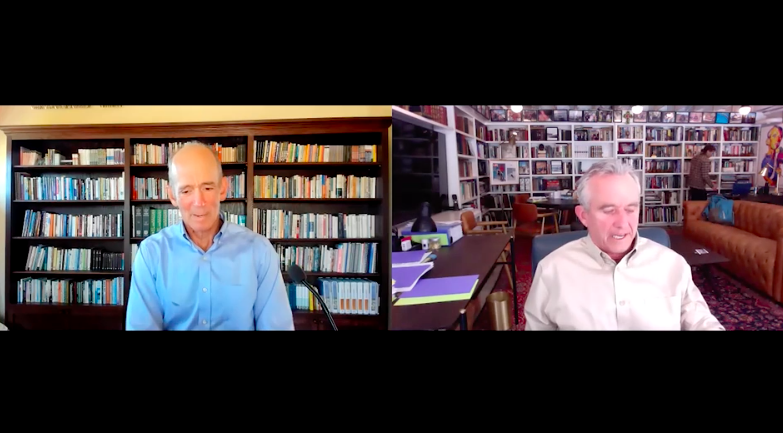All Global Research articles can be read in 51 languages by activating the “Translate Website” drop down menu on the top banner of our home page (Desktop version).
***
The Eisenhower presidency would see Washington taken over by business executives, Wall Street lawyers, and investment bankers—and by a closely aligned warrior caste that had emerged into public prominence during World War II.
As discussed in part two of this series, the war in Vietnam did not start on its official date, November 1st, 1955, but rather 1945 when American clandestine operations were launched in Vietnam to “prepare the ground”.
Fletcher Prouty, who served as Chief of Special Operations for the Joint Chiefs of Staff under Kennedy and was a former Col. in the U.S. Air Force, goes over in his book The CIA, Vietnam and the Plot to Assassinate John F. Kennedy, how the CIA was used to instigate psy-ops and paramilitary (terrorist) activities in Vietnam to create the pretext required for an open declaration of war and for the entry of the U.S. military into a twenty-year-long meat grinder.
This was a strategy reserved not just for Vietnam, but had become the general U.S. foreign policy in all regions that were considered threats to the Cold War Grand Strategy, as seen under the directorship of the Dulles brothers (See Part 1 and Part 2 of this series).
Any country that was observed to hold views that were not aligned with U.S. foreign policy could not simply be invaded in most scenarios, but rather, the ground would need to be prepared to create the justification for a direct military invasion.
This is one of the roles of the CIA which abides by the motto “fake it till you make it.”
Don’t have an actual ‘enemy’ to fight and justify your meddling into another country’s affairs? Not a problem. Just split your paramilitary team into “good guys” and “bad guys” and have them pretend fight. Go village to village repeating this action-drama and you will see how quickly the word will spread that there are “dangerous extremists” in the area that exist in “great numbers.”
Prouty described this paramilitary activity, which is called “Fun and Games,” and how this tactic was also used in the Philippines, resulting in the election of Ramon Magsaysay who was declared a hero against a non-existing enemy. In fact, the Filipino elite units that were trained by the CIA during this period were then brought into Vietnam to enact the very same tactic.
Prouty writes:
I have been to such training programs at U.S. military bases where identical tactics are taught to Americans as well as foreigners. It is all the same…these are the same tactics that were exploited by CIA superagent Edward G. Lansdale [the man in charge of the CIA Saigon Military Mission] and his men in the Philippines and Indochina.
This is an example of the intelligence service’s ‘Fun and Games.’ Actually, it is as old as history; but lately it has been refined, out of necessity, into a major tool of clandestine warfare.
Lest anyone think that this is an isolated case, be assured that it was not. Such ‘mock battles’ and ‘mock attacks on native villages’ were staged countless times in Indochina for the benefit of, or the operation of, visiting dignitaries, such as John McCone when he first visited Vietnam as the Kennedy appointed director of central intelligence [after Kennedy fired Allen Dulles].
What Prouty is stating here, is that the mock battles that occurred for these dignitaries were CIA trained agents “play-acting” as the Vietcong… to make it appear that the Vietcong were not only numerous but extremely hostile.
If even dignitaries can be fooled by such things unfolding before their own eyes, is it really a wonder that a western audience watching or reading about these affairs going on in the world through its mainstream media interpreter could possibly differentiate between “reality” vs a “staged reality”?
Not only were the lines between military and paramilitary operations becoming blurred, but as Prouty states in his book, the highest ranking officers who were operating and overseeing the Vietnam situation were all CIA operatives, not only within the U.S. military but including the U.S. Ambassador to South Vietnam, Henry Cabot Lodge.
Prouty writes:
US Ambassador Lodge – had since 1945 been one of the most important agents of the OSS and later the CIA in the Far East. His orders came from that agency.”
Prouty goes further to state in his book that Lodge was brought into the role as Ambassador on August 26th, 1963 specifically to remove Ngo Dinh Diem President of the Republic of Vietnam (South Vietnam), who was seeking a peaceful resolution to the conflict at that point.
Ngo Dinh Diem was killed two months after Lodge’s arrival in Vietnam, on November 1st, 1963. Twenty-one days later John F. Kennedy who was in the process of pulling out American troops from Vietnam, was assassinated. The Vietnam War continued for 12 years more, with the Americans having nothing to show for it. And in 1976, the city of Saigon, the capital of South Vietnam, was renamed Ho Chi Minh city.
A “legacy of ashes”
The militarization of government began to return power to the corporate elite, as captains of industry and finance moved into key government posts. The Eisenhower presidency would see Washington taken over by business executives, Wall Street lawyers, and investment bankers—and by a closely aligned warrior caste that had emerged into public prominence during World War II.
Eisenhower wished to establish U.S. supremacy while avoiding another large-scale shooting war as well as the imperial burdens that had bankrupted Great Britain (to which the U.S. now did its bidding under NSC-75). By leveraging the U.S. military’s near monopoly on nuclear firepower, the president hoped to make war an unthinkable proposition for all American adversaries.
The problem with Eisenhower’s strategy was that by keeping Washington in a constant state of high alert, he empowered the most militant voices in his administration. Eisenhower had made the grave error of choosing Foster Dulles as one of his close if not closest advisers, and thus whether he liked it or not, Allen Dulles – I doubt Eisenhower ever had a free moment from the poisoned honey that was constantly being dripped into his ear.
The line between CIA and military became increasingly blurred, as military officers were assigned to intelligence agency missions, and then sent back to their military posts as “ardent disciples of Allen Dulles,” in the words of Prouty, who served as a liaison officer between the Pentagon and the CIA between 1955 and 1963.
Approaching the end of his presidency, in May 1960, President Eisenhower had planned to culminate a “Crusade for Peace” with the ultimate summit conference with USSR Premier Nikita Khrushchev in Paris. It was Eisenhower’s clear attempt to finally push forward an initiative that was his own and which did not receive its “blessing” by Foster. If Eisenhower were to succeed in this, it would move to dissolve the Cold War Grand Strategy and remove the justification for a military-industrial complex.
In preparation for the summit, the White House had directed all overflight activity over communist territory to cease until further notice. Yet on May 1st, 1960, a high flying U-2 spy plane flown by Francis Gary Powers left Pakistan on a straight-line overflight of the Soviet Union en route to Bodo, Norway, contrary to the Eisenhower orders.
The U-2 crash-landed in Sverdlovsk, Russia. Amongst the possessions found in the plane, were of all things, identification of Powers being a CIA agent, something highly suspect for an intelligence officer to be carrying during a supposed covert mission.
The incident was enough to cancel the peace summit, and the “Crusade for Peace” was bludgeoned in its cradle.
Rumours abounded quickly thereafter that it was the Soviets who shot down the plane, however, it was Allen Dulles himself, who gave testimony before a closed-door session of the Senate Foreign Relations Committee that the U-2 spy plane had not been shot down but had descended because of “engine trouble.”[1] This important statement by Dulles was largely ignored by the press.
Later, Eisenhower confirmed in his memoirs that the spy plane had not been shot down by the Soviets and had indeed lost engine power and crash-landed in Russia.
Prouty suspected that the “engine failure” may have been induced by a pre-planned shortage of auxiliary hydrogen fuel and that Powers’ identification items were likely planted in his parachute pack. With only a certain amount of fuel and a straight line trajectory, it would have been easy to calculate exactly where Powers would be forced to make a landing.
Prouty suspected that the CIA had intentionally provoked the incident in order to ruin the peace conference and ensure the continued reign of Dulles dogmatism.
Interestingly, the man who was in charge of the Cuban exile program, Richard Bissell (deputy director of plans for the CIA), was the same man who ran the U-2 program and who, according to Prouty ostensibly sent the Powers flight over the Soviet Union on May 1st, 1960.
Richard Bissell, who was most certainly acting upon the orders of Dulles, was among the three (Allen Dulles, Director of the CIA and Charles Cabell, Deputy Director of the CIA) who were fired by Kennedy as a result of the Bay of Pigs fiasco, or more aptly put for their act of treason.
On Jan. 5th, 1961, during a meeting of the National Security Council, a frustrated and worn down President Eisenhower, put on public record just weeks before Kennedy was to assume office, that the CIA under Dulles, had robbed him of his place in history as a peacemaker and left nothing but “a legacy of ashes for his successor.”
All Eisenhower had left of his own was his farewell address, which he made on Jan. 17th, 1961, where he famously warned the American people of what had been festering during his eight-year presidential term:
In the councils of government, we must guard against the acquisition of unwarranted influence, whether sought or unsought, by the military-industrial complex… The potential for the disastrous rise of misplaced power exists, and will persist.“
A phoenix rising
Eisenhower may have left a legacy of ashes for his predecessor, but out of those ashes would emerge a force that would come to directly challenge the rule of the “power elite”.[2]
In April 1954, Kennedy stood up on the Senate floor to challenge the Eisenhower administration’s support for the doomed French imperial war in Vietnam, foreseeing that this would not be a short-lived war.[3]
In July 1957, Kennedy once more took a strong stand against French colonialism, this time France’s bloody war against Algeria’s independence movement, which again found the Eisenhower administration on the wrong side of history. Rising on the Senate floor, two days before America’s own Independence Day, Kennedy declared:
The most powerful single force in the world today is neither communism nor capitalism, neither the H-bomb nor the guided missile – it is man’s eternal desire to be free and independent.
The great enemy of that tremendous force of freedom is called, for want of a more precise term, imperialism – and today that means Soviet imperialism and, whether we like it or not, and though they are not to be equated, Western imperialism.
Thus, the single most important test of American foreign policy today is how we meet the challenge of imperialism, what we do to further man’s desire to be free.
On this test more than any other, this nation shall be critically judged by the uncommitted millions in Asia and Africa, and anxiously watched by the still hopeful lovers of freedom behind the Iron Curtain.
If we fail to meet the challenge of either Soviet or Western imperialism, then no amount of foreign aid, no aggrandizement of armaments, no new pacts or doctrines or high-level conferences can prevent further setbacks to our course and to our security.” [4]
In September 1960, the annual United Nations General Assembly was being held in New York. Castro and a fifty member delegation were among the attendees and had made a splash in the headlines when he decided to stay at the Hotel Theresa in Harlem after the midtown Shelburne Hotel demanded a $20,000 security deposit. He made an even bigger splash in the headlines when he made a speech at this hotel, discussing the issue of equality in the United States while in Harlem, one of the poorest boroughs in the country.
Kennedy would visit this very same hotel a short while later, and also made a speech:
Behind the fact of Castro coming to this hotel, [and] Khrushchev…there is another great traveler in the world, and that is the travel of a world revolution, a world in turmoil…We should be glad [that Castro and Khrushchev] came to the United States. We should not fear the twentieth century, for the worldwide revolution which we see all around us is part of the original American Revolution.”[5]
What did Kennedy mean by this? The American Revolution was fought for freedom, freedom from the rule of monarchy and imperialism in favour of national sovereignty. What Kennedy was stating, was that this was the very oppression that the rest of the world wished to shake the yoke off, and that the United States had an opportunity to be a leader in the cause for the independence of all nations.
On June 30th, 1960, marking the independence of the Republic of Congo from the colonial rule of Belgium, Patrice Lumumba, the first Congolese Prime Minister gave a speech that has become famous for its outspoken criticism of colonialism.
Lumumba spoke of his people’s struggle against “the humiliating bondage that was forced upon us… [years that were] filled with tears, fire and blood,” and concluded vowing “We shall show the world what the black man can do when working in liberty, and we shall make the Congo the pride of Africa.”
Shortly after, Lumumba also made clear:
We want no part of the Cold War[…]We want Africa to remain African with a policy of neutralism.”[6]
As a result, Lumumba was labeled a communist for his refusal to be a Cold War satellite for the western sphere. Rather, Lumumba was part of the Pan-African movement that was led by Ghanaian President Kwame Nkrumah (who later Kennedy would also work with), which sought national sovereignty and an end to colonialism in Africa.
Lumumba “would remain a grave danger,” Dulles said at an NSC meeting on September 21, 1960, “as long as he was not yet disposed of.” [7] Three days later, Dulles made it clear that he wanted Lumumba permanently removed, cabling the CIA’s Leopoldville station:
We wish give [sic] every possible support in eliminating Lumumba from any possibility resuming governmental position.”[8]
Lumumba was assassinated on Jan. 17th, 1961, just three days before Kennedy’s inauguration, during the fog of the transition period between presidents, when the CIA is most free to tie its loose ends, confident that they will not be reprimanded by a new administration that wants to avoid scandal on its first days in office.
Kennedy, who clearly meant to put a stop to the Murder Inc. that Dulles had created and was running, would declare to the world in his inaugural address on Jan. 20th, 1961, “The torch has been passed to a new generation of Americans.”
And so Kennedy’s battle with the Leviathan had begun.
La resistance
Along with inheriting the responsibility of the welfare of the country and its people, Kennedy was to also inherit a secret war with communist Cuba run by the CIA.
The Bay of Pigs set-up would occur three months later. Prouty compares the Bay of Pigs incident to that of the Crusade for Peace, both events were orchestrated by the CIA to ruin the U.S. president’s ability to form a peaceful dialogue with Khrushchev and decrease Cold War tensions. Both presidents’ took onus for the events respectively, despite the responsibility resting with the CIA. However, Eisenhower and Kennedy understood, if they did not take onus, it would be a public declaration that they did not have any control over their government agencies and military.
Further, the Bay of Pigs operation was in fact meant to fail. It was meant to stir up a public outcry for a direct military invasion of Cuba. On public record is a meeting (or more aptly described as an intervention) with CIA Deputy Director for Plans Richard Bissell, Joint Chiefs Chairman Lyman Lemnitzer, and Navy Chief Admiral Burke basically trying to strong-arm President Kennedy into approving a direct military attack on Cuba.
Admiral Burke had already taken the liberty of positioning two battalions of Marines on Navy destroyers off the coast of Cuba “anticipating that U.S. forces might be ordered into Cuba to salvage a botched invasion.”[9] (This incident is what inspired the Frankenheimer movie “Seven Days in May.”)
Kennedy stood his ground.
“They were sure I’d give in to them,” Kennedy later told Special Assistant to the President Dave Powers. “They couldn’t believe that a new president like me wouldn’t panic and try to save his own face. Well they had me figured all wrong.”[10]
Incredibly, not only did the young president stand his ground against the Washington war hawks just three months into his presidential term, but he also launched the Cuba Study Group which found the CIA to be responsible for the fiasco, leading to the humiliating forced resignation of Allen Dulles, Richard Bissell and Charles Cabell. (For more on this refer to my report.)
Unfortunately, it would not be that easy to dethrone Dulles, who continued to act as head of the CIA, and key members of the intelligence community such as Helms and Angleton regularly bypassed McCone and briefed Dulles directly.[11] But Kennedy was also serious about seeing it all the way through, and vowed to “splinter the CIA into a thousand pieces and scatter it to the winds.”
There is another rather significant incident that had occurred just days after the Bay of Pigs, and which has largely been overshadowed by the Cuban fiasco.
From April 21-26th, 1961, the Algiers putsch or Generals’ putsch, was a failed coup d’état intended to force President de Gaulle (1959-1969) not to abandon the colonial French Algeria. The organisers of the putsch were opposed to the secret negotiations that French Prime Minister Michel Debré had started with the anti-colonial National Liberation Front (FLN).
On January 26th, 1961, just three months before the attempted coup d’état, Dulles sent a report to Kennedy on the French situation that seemed to be hinting that de Gaulle would no longer be around:
A pre-revolutionary atmosphere reigns in France…The Army and the Air Force are staunchly opposed to de Gaulle…At least 80 percent of the officers are violently against him. They haven’t forgotten that in 1958, he had given his word of honor that he would never abandon Algeria. He is now reneging on his promise, and they hate him for that. de Gaulle surely won’t last if he tries to let go of Algeria. Everything will probably be over for him by the end of the year — he will be either deposed or assassinated.”[12]
The attempted coup was led by Maurice Challe, whom de Gaulle had reason to conclude was working with the support of US intelligence, and Élysée officials began spreading this word to the press, which reported the CIA as a “reactionary state-within-a-state” that operated outside of Kennedy’s control.[13]
Shortly before Challe’s resignation from the French military, he had served as NATO commander in chief and had developed close relations with a number of high-ranking US officers stationed in the military alliance’s Fontainebleau headquarters.[14]
In August 1962 the OAS (Secret Army Organization) made an assassination attempt against de Gaulle, believing he had betrayed France by giving up Algeria to Algerian nationalists. This would be the most notorious assassination attempt on de Gaulle (who would remarkably survive over thirty assassination attempts while President of France) when a dozen OAS snipers opened fire on the president’s car, which managed to escape the ambush despite all four tires being shot out.
After the failed coup d’état, de Gaulle launched a purge of his security forces and ousted General Paul Grossin, the chief of SDECE (the French secret service). Grossin was closely aligned with the CIA, and had told Frank Wisner over lunch that the return of de Gaulle to power was equivalent to the Communists taking over in Paris.[15]
In 1967, after a five-year enquête by the French Intelligence Bureau, it released its findings concerning the 1962 assassination attempt on de Gaulle. The report found that the 1962 assassination plot could be traced back to the NATO Brussels headquarters, and the remnants of the old Nazi intelligence apparatus. The report also found that Permindex had transferred $200,000 into an OAS bank account to finance the project.
As a result of the de Gaulle exposé, Permindex was forced to shut down its public operations in Western Europe and relocated its headquarters from Bern, Switzerland to Johannesburg, South Africa, it also had/has a base in Montreal, Canada where its founder Maj. Gen. Louis M. Bloomfield (former OSS) proudly had his name amongst its board members until the damning de Gaulle report. The relevance of this to Kennedy will be discussed shortly.
As a result of the SDECE’s ongoing investigation, de Gaulle made a vehement denunciation of the Anglo-American violation of the Atlantic Charter, followed by France’s withdrawal from the NATO military command in 1966. France would not return to NATO until April 2009 at the Strasbourg-Kehl Summit.
In addition to all of this, on Jan. 14th, 1963, de Gaulle declared at a press conference that he had vetoed British entry into the Common Market. This would be the first move towards France and West Germany’s formation of the European Monetary System, which excluded Great Britain, likely due to its imperialist tendencies and its infamous sin City of London.
Former Secretary of State Dean Acheson telegrammed West German Chancellor Konrad Adenauer directly, appealing to him to try to persuade de Gaulle to backtrack on the veto, stating “if anyone can affect Gen. de Gaulle’s decision, you are surely that person.”
Little did Acheson know that Adenauer was just days away from singing the Franco-German Treaty of Jan 22nd, 1963 (also known as the ÉlyséeTreaty), which had enormous implications. Franco-German relations, which had long been dominated by centuries of rivalry, had now agreed that their fates were aligned.
(This close relationship was continued to a climactic point in the late 1970s, with the formation of the EMS, and France and West Germany’s willingness in 1977 to work with OPEC countries trading oil for nuclear technology, which was sabotaged by the US-Britain alliance. For more on this refer to my paper.)
The Élysée Treaty was a clear denunciation of the Anglo-American forceful overseeing that had overtaken Western Europe since the end of WWII.
On June 28th, 1961, Kennedy wrote NSAM #55. This document changed the responsibility of defense during the Cold War from the CIA to the Joint Chiefs of Staff and would have (if seen through) drastically changed the course of the war in Vietnam. It would also have effectively removed the CIA from Cold War operations and limited the CIA to its sole lawful responsibility, the coordination of intelligence.
By Oct 11th, 1963, NSAM #263, closely overseen by Kennedy[16], was released and outlined a policy decision “to withdraw 1,000 military personnel [from Vietnam] by the end of 1963” and further stated that “It should be possible to withdraw the bulk of U.S. personnel [including the CIA and military] by 1965.” The Armed Forces newspaper Stars and Stripes had the headline U.S. TROOPS SEEN OUT OF VIET BY ’65.
With the assassination of Ngo Dinh Diem, likely ordained by the CIA, on Nov. 2nd, 1963 and Kennedy just a few weeks later on Nov. 22nd, 1963, de facto President Johnson signed NSAM #273 on Nov. 26th, 1963 to begin the reversal of Kennedy’s policy under #263. And on March 17th, 1964, Johnson signed NSAM #288 that marked the full escalation of the Vietnam War and involved 2,709,918 Americans directly serving in Vietnam, with 9,087,000 serving with the U.S. Armed Forces during this period.
The Vietnam War would continue for another 12 years after Kennedy’s death, lasting a total of 20 years for Americans, and 30 years if you count American covert action in Vietnam.
The last days of Kennedy
By Germany supporting de Gaulle’s exposure of the international assassination ring, his adamant opposition to western imperialism and the role of NATO, and with a young Kennedy building his own resistance against the Federal Reserve and the imperialist war of Vietnam, it was clear that the power elite were in big trouble.
There is a lot of spurious effort to try to ridicule anyone who challenges the Warren Commission’s official report as nothing but fringe conspiracy theory. And that we should not find it highly suspect that Allen Dulles, of all people, was a member of this commission. The reader should keep in mind that much of this frothing opposition stems from the very agency that perpetrated crime after crime on the American people, as well as abroad. When has the CIA ever admitted guilt, unless caught red-handed? Even after the Church committee hearings, when the CIA was found guilty of planning out foreign assassinations, they claimed that they had failed in every single plot or that someone had beaten them to the punch.
The American people need to realise that the CIA is not a respectable agency; we are not dealing with honorable men. It is a rogue force that believes that the ends justify the means, that they are the hands of the king so to speak, above government and above law. Those at the top such as Allen Dulles were just as adamant as Churchill about protecting the interests of the power elite, or as Churchill termed it, the “High Cabal.”
Interestingly, on Dec. 22nd, 1963, just one month after Kennedy’s assassination, Harry Truman published a scathing critique of the CIA in The Washington Post, even going so far as to state “There is something about the way the CIA has been functioning that is casting a shadow over our historic position [as a] free and open society, and I feel that we need to correct it.”[17]
The timing of this is everything.
As Prouty has stated, anyone with a little bit of free time during an afternoon could discover for themselves that the Warren Commission was an embarrassingly incompetent hodge-podge, that conducted itself as if it were a done deal that Oswald killed Kennedy and was disinterested in hearing anything contrary to that narrative.
Not only did the record of Oswald’s interrogation at the Dallas Police Department go up in smoke, likely because he was making the inconvenient claim that he was a “patsy,” but his nitrate test which proved that he never shot a rifle the day of Nov. 22nd, 1963, was kept secret for 10 months and was only revealed in the final report,[18] which inexplicably did not change the report’s conclusion that Oswald shot Kennedy.
During Garrison’s trial on the Kennedy assassination (1967-1969) he subpoenaed the Zapruder film that had been locked up in some vault owned by Life magazine (whose founder Henry Luce was known to work closely with the CIA[19]). This was the first time in more than five years that the Zapruder film was made public. It turns out the FBI’s copy that was sent to the Warren Commission had two critical frames reversed to create a false impression that the rifle shot was from behind.
When Garrison got a hold of the original film it was discovered that the head shot had actually come from the front. In fact, what the whole film showed was that the President had been shot from multiple angles meaning there was more than one gunman.
This was not the only piece of evidence to be tampered with, and includes Kennedy’s autopsy reports.
There is also the matter of the original autopsy papers being destroyed by the chief autopsy physician, James Humes, to which he even testified to during the Warren Commission, apparently nobody bothered to ask why…
In addition, Jim Garrison, New Orleans District Attorney at the time who was charging Clay Shaw as a member of the conspiracy to kill Kennedy, besides uncovering his ties to David Ferrie who was found dead in his apartment days before he was scheduled to testify, also made a case that the New Orleans International Trade Mart (to which Clay Shaw was director), the U.S. subsidiary of Permindex, was linked to Kennedy’s murder.
Garrison did a remarkable job with the odds he was up against, and for the number of witnesses that turned up dead before the trial…
This Permindex link would not look so damning if we did not have the French intelligence SDECE report, but we do. And recall, in that report Permindex was caught transferring $200,000 directly to the bankroll of the OAS which attempted the 1962 assassination on de Gaulle.
Thus, Permindex’s implication in an international assassination ring is not up for debate. In addition, the CIA was found heavily involved in these assassination attempts against de Gaulle, thus we should not simply dismiss the possibility that Permindex was indeed a CIA front for an international hit crew.
In fact, among the strange and murderous characters who converged on Dallas in Nov. 1963 was a notorious French OAS commando named Jean Souetre, who was connected to the plots against President de Gaulle. Souetre was arrested in Dallas after the Kennedy assassination and expelled to Mexico.[20]
Col. Clay Shaw was an OSS officer during WWII, which provides a direct link to his knowing Allen Dulles, and thus we come around full circle.
After returning from Kennedy’s Nov. 24th funeral in Washington, de Gaulle and his information minister Alain Peyrefitte had a candid discussion that was recorded in Peyrefitte’s memoire “C’était de Gaulle,” the great General was quoted saying:
What happened to Kennedy is what nearly happened to me… His story is the same as mine. … It looks like a cowboy story, but it’s only an OAS [Secret Army Organization] story. The security forces were in cahoots with the extremists.
…Security forces are all the same when they do this kind of dirty work. As soon as they succeed in wiping out the false assassin, they declare the justice system no longer need be concerned, that no further public action was needed now that the guilty perpetrator was dead. Better to assassinate an innocent man than to let a civil war break out. Better an injustice than disorder.
America is in danger of upheavals. But you’ll see. All of them together will observe the law of silence. They will close ranks. They’ll do everything to stifle any scandal. They will throw Noah’s cloak over these shameful deeds. In order to not lose face in front of the whole world. In order to not risk unleashing riots in the United States. In order to preserve the union and to avoid a new civil war. In order to not ask themselves questions. They don’t want to know. They don’t want to find out. They won’t allow themselves to find out.
*
Note to readers: please click the share buttons above or below. Forward this article to your email lists. Crosspost on your blog site, internet forums. etc.
Cynthia Chung is a lecturer, writer and co-founder and editor of the Rising Tide Foundation (Montreal, Canada). The author can be reached at [email protected]
Notes
(1) L. Fletcher Prouty, “The Cia, Vietnam and the Plot to Assassinate John F. Kennedy, ” pg 147
(2) C. Wright Mills, “The Power Elite”
(3) David Talbot, “The Devil’s Chessboard,” pg 304
(4) Ibid, pg 305
(5) Ibid, pg 295
(6) Ibid, pg 319
(7) Ibid, pg 319
(8) Ibid, pg 319
(9) Ibid, pg 337
(10) Ibid, pg 337
(11) Ibid, pg 359
(12) Ibid, pg 350
(13) Ibid, pg 353
(14) Ibid, pg 347
(15) Ibid, pg 354
(16) L. Fletcher Prouty, “The CIA, Vietnam, and the Plot to Assassinate John F. Kennedy,” pg xxxiv
(17) David Talbot, “The Devil’s Chessboard,” pg 201
(18) Jim Garrison, “On the Trail of the Assassins,” pg 116-117
(19) David Talbot, “The Devil’s Chessboard,” pg 72, 128
(20) Ibid, pg 422
Featured image is from Wikimedia Commons


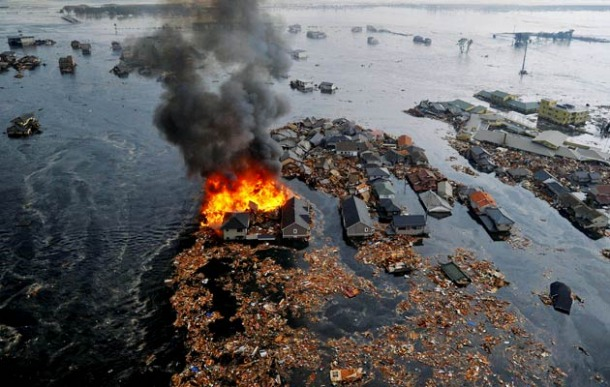
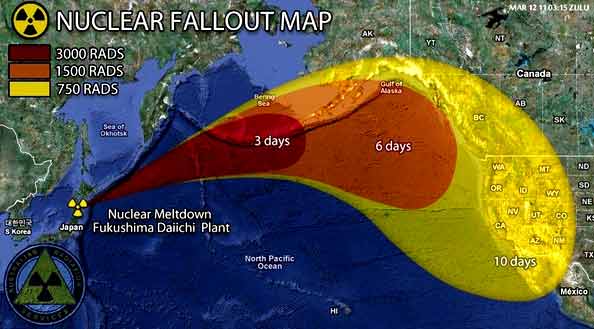
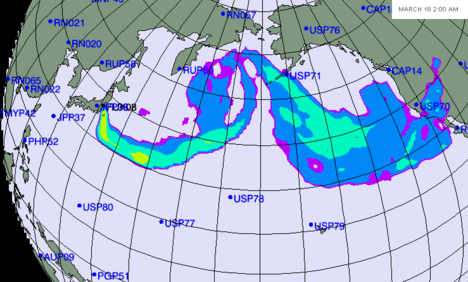
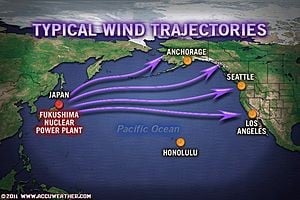
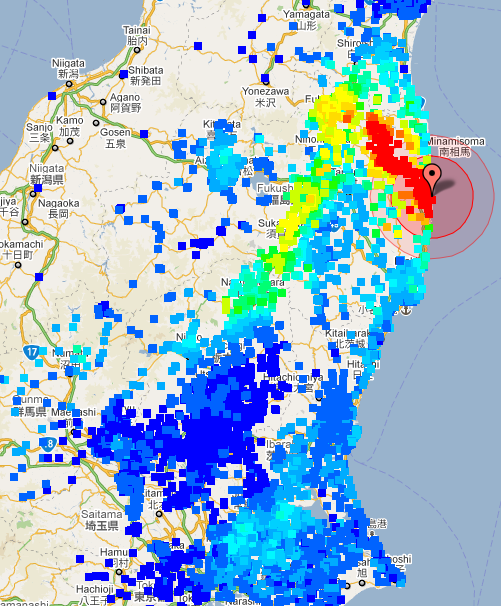
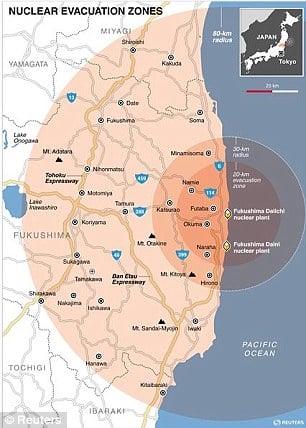 The crisis in Japan has also brought into the open the unspoken relationship between nuclear energy and nuclear war.
The crisis in Japan has also brought into the open the unspoken relationship between nuclear energy and nuclear war.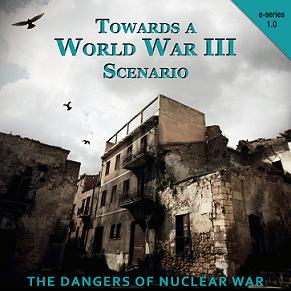
 . See the
. See the  and
and  .
. 



